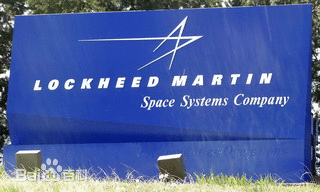The military, space and aviation experts at Lockheed Martin want you to know that they're closing in on fusion. The firm's secretive Skunk Works has announced that its compact fusion reactor is a mere 10 years away and would investors please send money.
洛克希德·馬丁公司的軍事及航空航天專(zhuān)家想讓你們知道,他們的聚變實(shí)驗(yàn)正接近成功。日前,該公司的神秘臭鼬工廠宣布:小型聚變反應(yīng)堆的研發(fā)僅還需十年,投資者們快快投資吧!
The device would work… if it works…by fusing atoms of hydrogen together. This fusion produces a larger atom—helium—plus copious energy. As a bonus, fusion does not produce radioactive waste, unlike its poor cousin fission that's in use in nuclear reactors around the world today.
該設(shè)備可能能運(yùn)轉(zhuǎn)……如果它能運(yùn)轉(zhuǎn),那么,……它是通過(guò)將氫原子融合在一起而運(yùn)轉(zhuǎn)的。這一聚變會(huì)產(chǎn)生大量的氦原子——以及豐富的能源。其額外優(yōu)點(diǎn)是:與如今應(yīng)用在核反應(yīng)堆中的裂變不同,聚變不會(huì)產(chǎn)生放射性廢棄物。

The key to Lockheed's device, they say, is superconductors. They’ll create magnetic fields strong enough to contain the superhot plasma created by fusion. When the atoms of heavy hydrogen fuse in that plasma, neutrons are released that then hit the reactor wall, heating it. That heat then boils water to make steam to spin a turbine.
他們說(shuō),洛克希德設(shè)備的關(guān)鍵在于超導(dǎo)體。超導(dǎo)體能制造出足夠強(qiáng)大的磁場(chǎng),控制住聚變產(chǎn)生的超高溫等離子體。當(dāng)重原子氫和等離子體重合時(shí),被釋放出的中子會(huì)撞擊反應(yīng)堆外壁,并將其加熱。熱量使得水沸騰成為水蒸氣,水蒸氣再帶動(dòng)蒸汽渦輪機(jī)旋轉(zhuǎn)。
Or so the theory goes. Unfortunately, neutrons have a nasty habit of making materials brittle, among other challenges faced by Lockheed and everyone else chasing fusion.
理論上大概是這樣的。可惜的是,第一:中子有種惡習(xí),它會(huì)增加材料的脆性——這是洛克希德公司面臨的挑戰(zhàn)之一;第二,其他人也熱衷于聚變。
Of course, the world already enjoys the benefits of one fusion reactor, which sits at a comfortable remove and can be easily harnessed with a working technology called photovoltaics. It's called the Sun.
當(dāng)然,世人早已享受到了一種聚變反應(yīng)堆帶來(lái)的好處——這種聚變能夠讓人自由走動(dòng),且易于被人使用(利用光伏處理技術(shù)即可)——這種聚變反應(yīng)堆就是太陽(yáng)。











